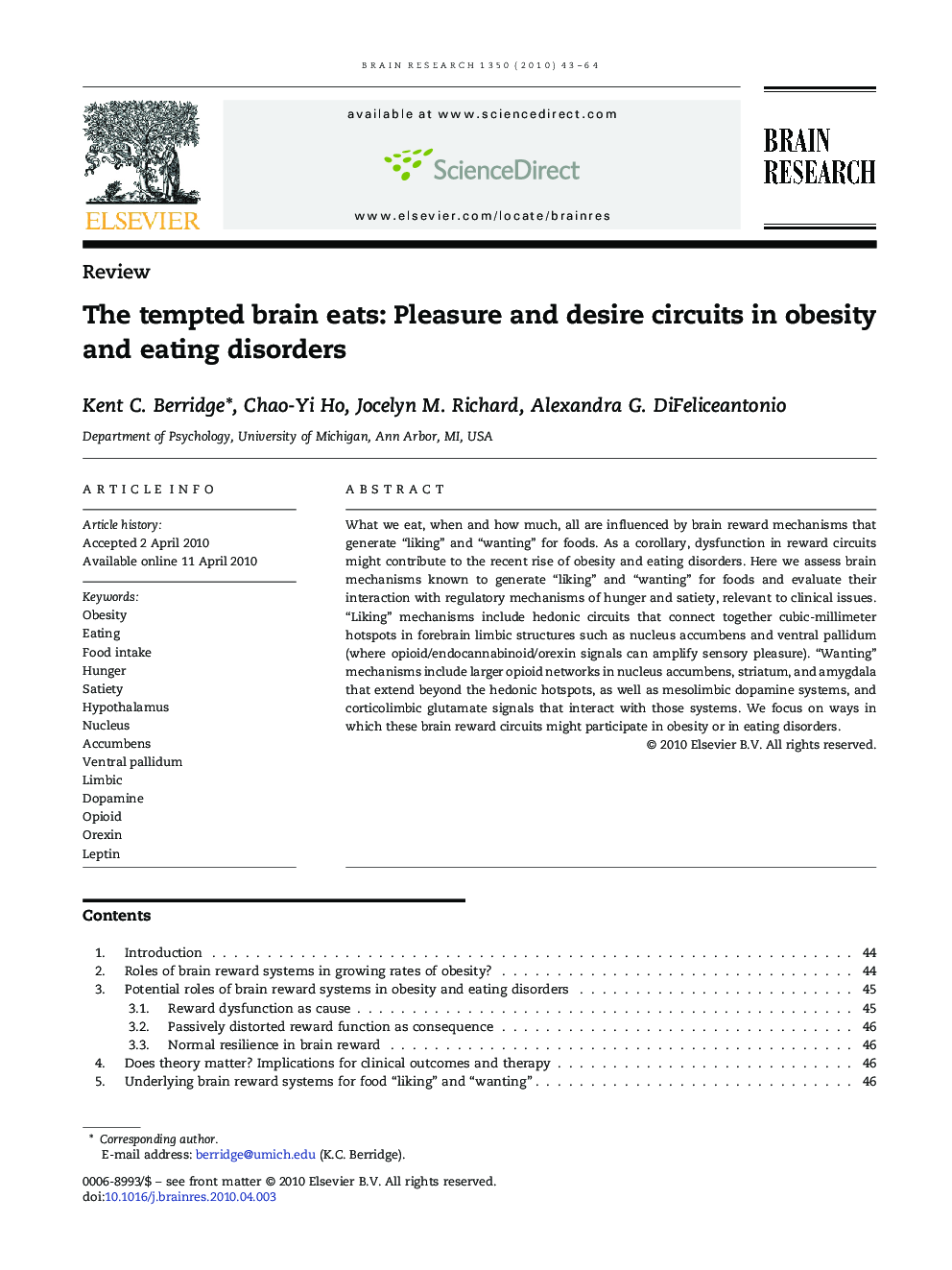| Article ID | Journal | Published Year | Pages | File Type |
|---|---|---|---|---|
| 4326605 | Brain Research | 2010 | 22 Pages |
What we eat, when and how much, all are influenced by brain reward mechanisms that generate “liking” and “wanting” for foods. As a corollary, dysfunction in reward circuits might contribute to the recent rise of obesity and eating disorders. Here we assess brain mechanisms known to generate “liking” and “wanting” for foods and evaluate their interaction with regulatory mechanisms of hunger and satiety, relevant to clinical issues. “Liking” mechanisms include hedonic circuits that connect together cubic-millimeter hotspots in forebrain limbic structures such as nucleus accumbens and ventral pallidum (where opioid/endocannabinoid/orexin signals can amplify sensory pleasure). “Wanting” mechanisms include larger opioid networks in nucleus accumbens, striatum, and amygdala that extend beyond the hedonic hotspots, as well as mesolimbic dopamine systems, and corticolimbic glutamate signals that interact with those systems. We focus on ways in which these brain reward circuits might participate in obesity or in eating disorders.
